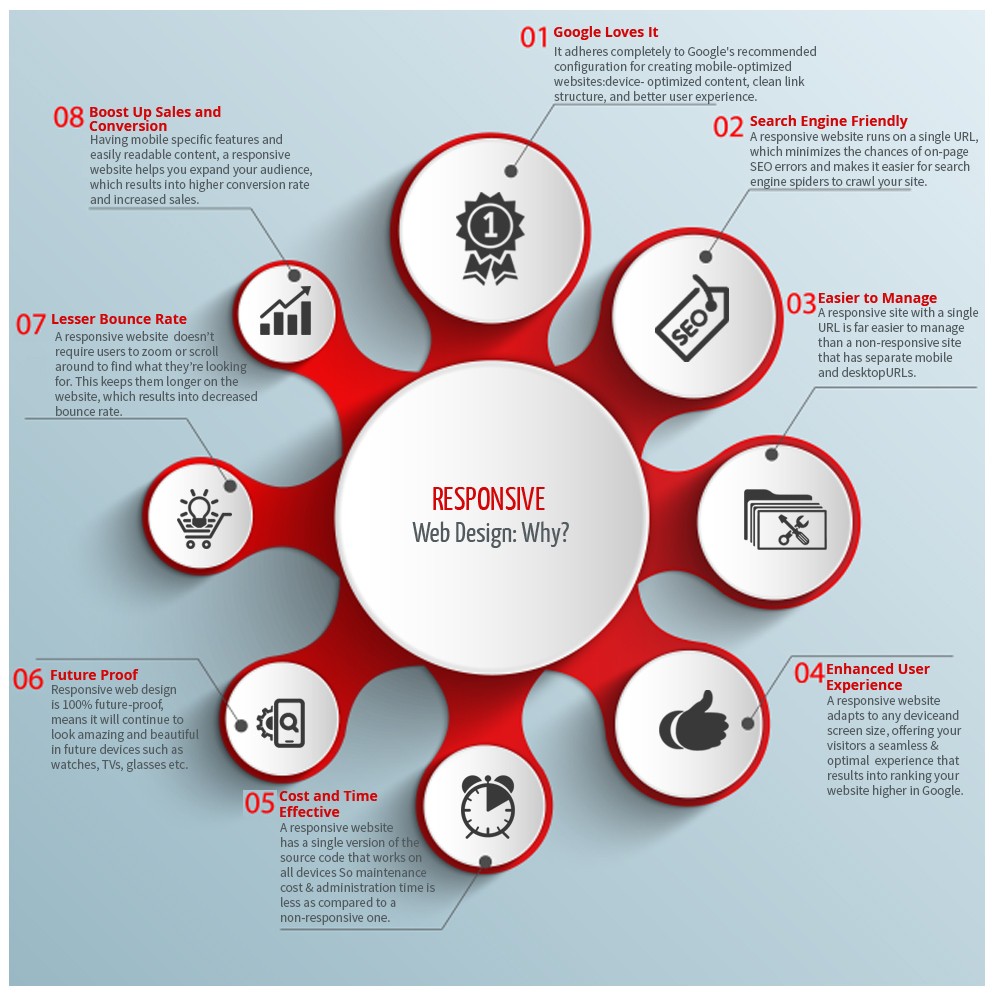Website Design Basics: Tips For Structure A User-Friendly Website
Website Design Basics: Tips For Structure A User-Friendly Website
Blog Article
Material By-Le Thorpe
When it concerns web site layout, guaranteeing user-friendliness is vital. From receptive style to streamlined navigating, every component plays a vital role in producing a website that accommodates your target market's needs. Yet what about the better details that can make or break an individual's surfing experience? Keep tuned as we discover some often-overlooked suggestions that can raise your website's functionality to the next level, making it absolutely stand out in the digital landscape.
Relevance of Responsive Layout
Responsive layout is a crucial aspect of modern-day site development. Ensuring your site is responsive methods that it can adjust to various screen dimensions and devices, supplying a seamless experience for individuals.
With the boosting use mobile phones and tablet computers to access the internet, having a responsive layout is vital for getting to a wider target market. It aids in improving customer experience by making your internet site very easy to browse and read on any kind of device.
Additionally, responsive style can positively impact your online search engine rankings, as online search engine like Google prioritize mobile-friendly websites. By having a responsive layout, you're likewise future-proofing your web site, as new gadgets with differing screen dimensions continue to arise.
Simplify Navigation Structure
To boost individual experience and promote very easy access to details on your website, streamlining the navigation framework is vital. When making your site, focus on developing a clear and intuitive navigating menu that aids site visitors find what they're looking for swiftly.
Limit the number of food selection products to the fundamentals, organizing relevant web pages together to prevent frustrating users. Usage descriptive tags that clearly show the web content of each web page, making it much easier for users to understand where each web link will take them.
Consider implementing dropdown menus for subcategories to avoid jumbling the major navigation bar. In addition, include a search bar prominently on the web page for customers that choose searching for specific details.
Focus on mobile responsiveness in your navigation layout to guarantee very easy gain access to on all devices.
Maximize Page Load Rate
Improving page tons speed is essential for keeping visitors on your website. Slow-loading web pages discourage users and can cause high bounce rates. To optimize page tons rate, beginning by enhancing photos. Compress photos without endangering top quality to lower their file sizes.
Additionally, allow internet browser caching to keep often accessed sources in your area, quickening load times for returning site visitors. website design content , JavaScript, and HTML data by removing unnecessary personalities, remarks, and formatting, improving load speed.
Think about utilizing https://emailmarketingautomations16050.actoblog.com/31760568/a-guide-to-designing-a-striking-web-site-that-orders-site-visitors-attention (CDN) to distribute your website's web content throughout multiple web servers worldwide, decreasing latency for users accessing your site from various areas. Finally, restrict the use of third-party scripts and plugins, as they can dramatically impact tons times.
Conclusion
Finally, by including responsive style, simplifying navigation, and maximizing page tons speed, you can create a straightforward site that attract a larger target market and improves user experience. These essential elements ensure that visitors can conveniently accessibility and browse your website throughout various tools, causing boosted interaction and complete satisfaction. By concentrating on these essential facets, you can construct an effective site that keeps individuals coming back for even more.
